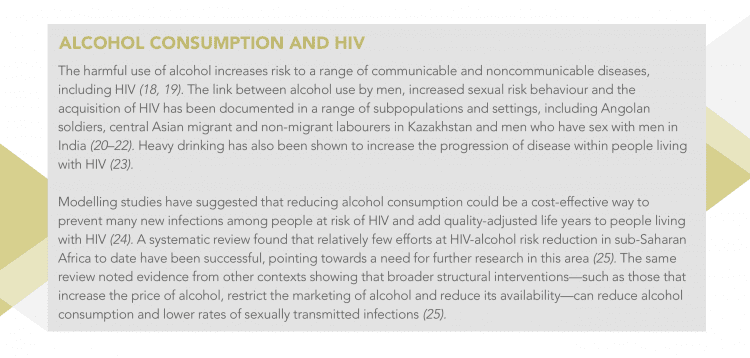New UNAIDS Report Warns About Harmful Masculinities Posing Major Obstacles
On December 1, World AIDS Day, UNAIDS has released a new report that warns men are less likely to take an HIV test, less likely to access antiretroviral therapy and more likely to die of AIDS-related illnesses than women. The new report shows the blind spot in reaching men with HIV services.
The Blind spot report shows that globally less than half of men living with HIV are on treatment, compared to 60% of women. Studies show that men are more likely than women to start treatment late, to interrupt treatment and to be lost to treatment follow-up. The report addresses alcohol as a major risk factor for contracting the HI-virus and for problems with treatment adherence, as well as the role of alcohol in disease progression. The main argument os the Blind sport report is that harmful masculinities are posing major obstacles to protecting and helping men and boys more.
Addressing the inequalities that put women and girls at risk of HIV is at the forefront of the AIDS response,” said Michel Sidibé, Executive Director of UNAIDS.
But there is a blind spot for men—men are not using services to prevent HIV or to test for HIV and are not accessing treatment on the scale that women are.”
In sub-Saharan Africa, men and boys living with HIV are 20% less likely than women and girls living with HIV to know their HIV status, and 27% less likely to be accessing treatment. In KwaZulu-Natal, the province with the highest HIV prevalence in South Africa, only one in four men aged 20–24 years living with HIV in 2015 knew that they had the virus.
In western and central Africa, a region that is struggling to respond effectively to HIV, only 25% of men living with HIV are accessing treatment. When people are not on treatment they are more likely to transmit HIV.
When men access HIV prevention and treatment services, there is a triple dividend,” said Mr Sidibé.
They protect themselves, they protect their sexual partners and they protect their families.”
Men in especially vulnerable populations
The Blind spot also shows that HIV prevalence is consistently higher among men within key populations. Outside of eastern and southern Africa, 60% of all new HIV infections among adults are among men. The report outlines the particular difficulties men in key populations face in accessing HIV services, including discrimination, harassment and denial of health services.
Men who have sex with men are 24 times more likely to acquire HIV than men in the general population and in over two dozen countries HIV prevalence among men who have sex with men is 15% or higher. However, recent studies suggest that condom use is dropping in Australia, Europe and the United States of America. In the United States, for example, the percentage of HIV-negative gay men and other men who have sex with men who engage in sex without using condoms increased from 35% to 41% between 2011 and 2014.
We cannot let complacency set in,” said Mr Sidibé.
If complacency sets in, HIV will take hold and our hopes of ending AIDS by 2030 will be shattered.”
The Blind spot shows that around 80% of the 11.8 million people who inject drugs are men and that HIV prevalence among people who inject drugs exceeds 25% in several countries. Condom use is almost universally low among people who inject drugs and the percentage of men who inject drugs using sterile injecting equipment during their last drug injection varies from country to country. In Ukraine, for example, the percentage of men who inject drugs who used a sterile needle at last injection was well over 90%, whereas in the United States only around 35% used a sterile needle.
In prisons, where 90% of detainees are men, HIV prevalence is estimated at between 3% and 8%, yet condoms and harm reduction services are rarely made available to detainees.
While HIV testing has been able to reach women, particularly women using antenatal services, the same entry points have not been found for men, limiting uptake of HIV testing among men.
Harmful masculinities
The concept of harmful masculinity and male stereotypes create conditions that make having safer sex, taking an HIV test, accessing and adhering to treatment—or even having conversations about sexuality—a challenge for men,” said Mr Sidibé.
But men need to take responsibility. This bravado is costing lives.”
The report shows the need to invest in boys and girls at an early age, ensuring that they have access to age-appropriate comprehensive sexuality education that addresses gender equality and is based on human rights, creating healthy relationships and promoting heath-seeking behaviour for both girls and boys.
The report urges a supportive legal and policy environment that addresses risk factors like use of alcohol or other drugs and that tackles common barriers to accessing HIV services, especially for key populations, and can accommodate the diverse needs and realities of men and boys.
The Blind spot shows that by enabling men to stay free from HIV, get tested regularly and start and stay on treatment if HIV-positive, the benefits will not only improve male health outcomes, but will contribute to declines in new HIV infections among women and girls and to altering harmful gender norms.

